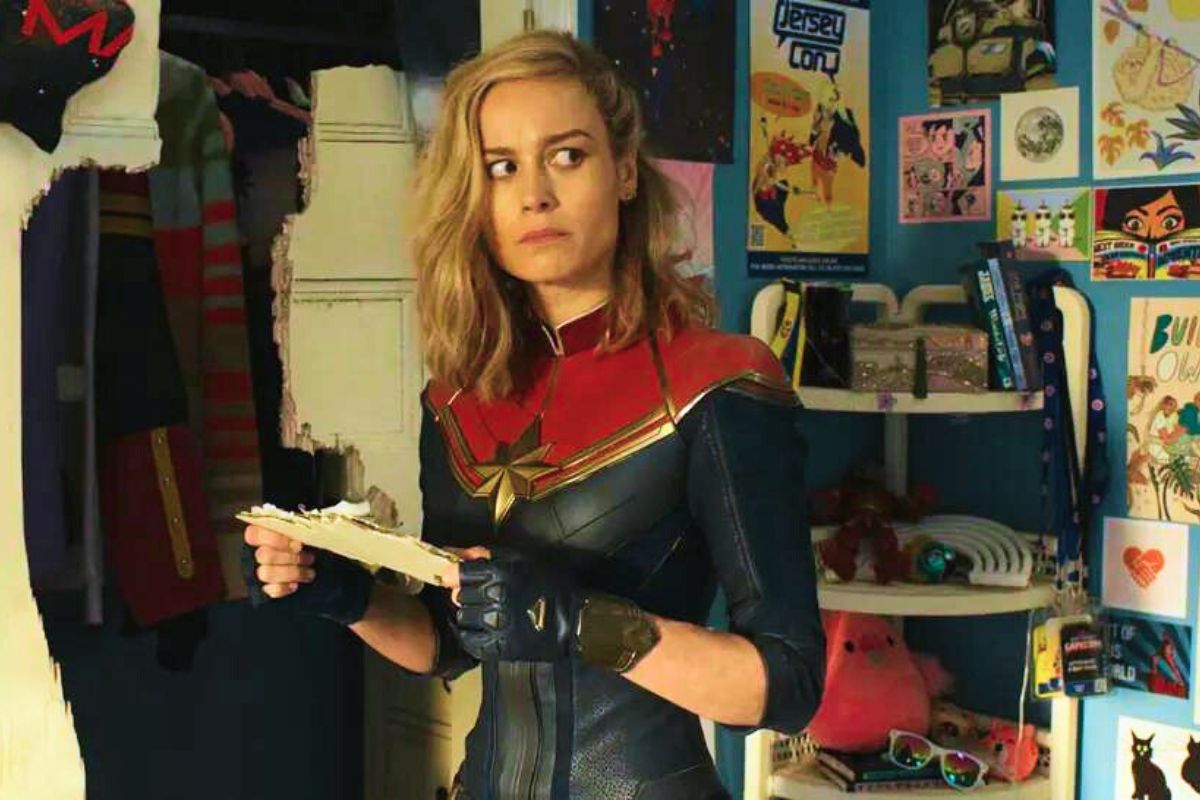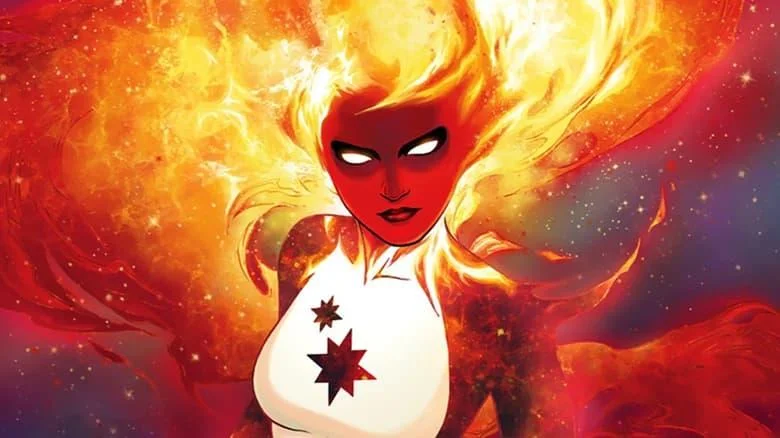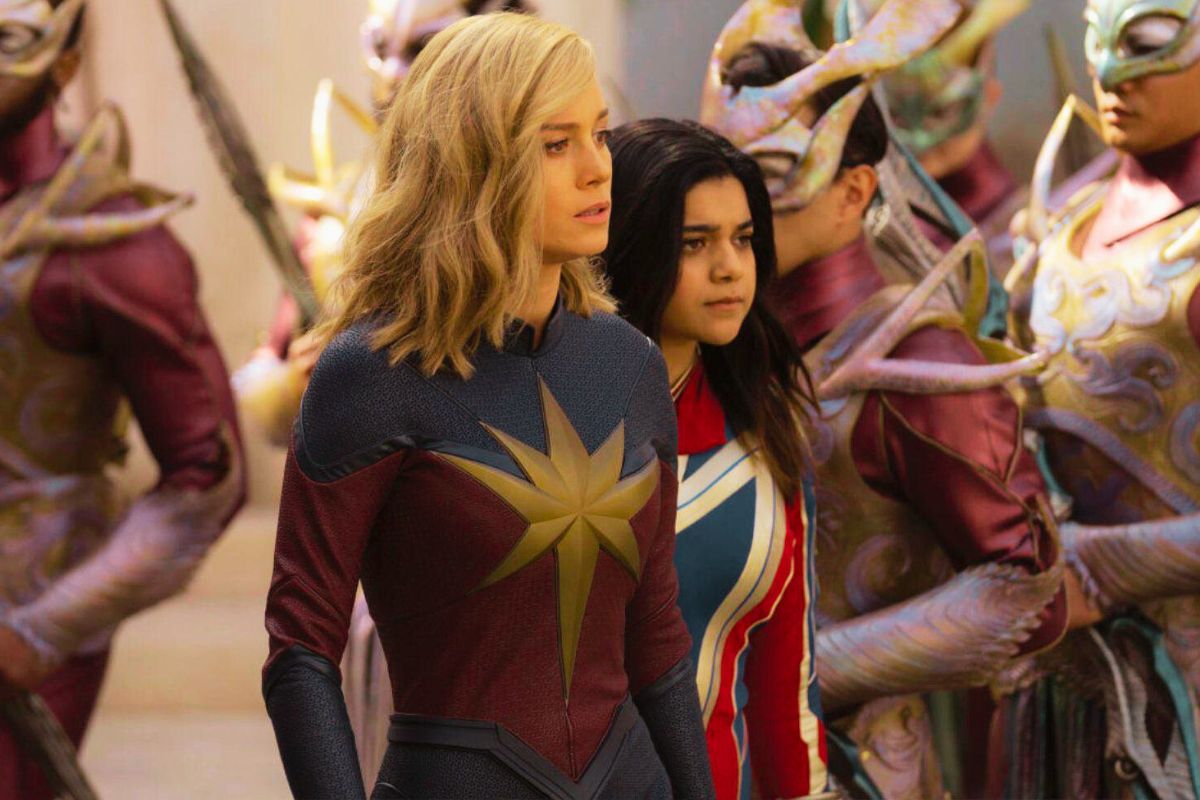The Marvel Cinematic Universe (MCU) has once again captivated audiences with the release of “The Marvels.” Beyond the main storyline, the post-credit scenes provide intriguing glimpses into the future of the MCU, particularly regarding the integration of the X-Men.
In this article, we will present a comprehensive analysis of the post-credit scenes in “The Marvels.”
Read More: The Marvels (2023) Movie Review & Film Summary
The Marvels: A Recap
Before delving into the post-credit scenes, let’s briefly recap the main plot of “The Marvels.” Carol Danvers, also known as Captain Marvel, seeks vengeance against the tyrannical Kree and the Supreme Intelligence. The narrative unfolds with Carol navigating a destabilized universe caused by a wormhole linked to a Kree revolutionary. As the cosmic arm of Fury’s Avengers, she joins forces with Kamala Khan and S.A.B.E.R. astronaut Captain Monica Rambeau to prevent the destruction of planets and the fabric of time and space.

The Marvels Post-Credit Scene: A Singular Revelation
“The Marvels” boasts one mid-credits scene, following the initial stylized credits. The scene takes place after repairing a space-time hole caused by Kree leader Dar-Benn and leaves Monica Rambeau stranded in a parallel universe. As Monica awakens in a hospital bed, she is greeted by her mother, Maria, and Carol’s best friend. To Monica’s surprise, her mother is alive and wearing a red and white suit reminiscent of Binary, a hero from the comics.
The post-credit scene introduces Dr. Hank McCoy, also known as Beast from the X-Men, as Monica’s doctor. He informs Monica that she is in a parallel universe, offering the first explicit connection between the X-Men and the MCU. The article emphasizes the significance of this moment, indicating that the X-Men are officially part of the MCU. The use of the parallel universe concept allows Marvel to explain the X-Men’s absence from previous projects and sets the stage for potential crossovers and narrative expansions.
X-Men Elements in The Marvels: A Paradigm Shift
The infusion of X-Men elements into the Marvel Cinematic Universe (MCU) marks a significant paradigm shift in the storytelling landscape. One noteworthy revelation is the mutation of Kamala Khan, as unveiled in Ms. Marvel Season 1, diverging from her established Inhuman origin in the comics. This alteration serves as a testament to the MCU’s creative liberty in reshaping characters to suit evolving narrative arcs. The implications of Kamala’s mutant status contribute to the growing narrative tapestry of the MCU.
The crux of this transformative integration lies in The Marvels post-credit scene, where the enigmatic Beast makes a compelling appearance. Portrayed by Kelsey Grammer, the very actor who embodied the character in “X-Men: The Last Stand,” Beast’s return signals a deliberate nod to the original X-Men cast. This casting choice, coupled with the anticipated returns of Hugh Jackman as Wolverine and Patrick Stewart as Professor Xavier in other MCU ventures, solidifies the foundational integration of the X-Men into the MCU.
The deliberate selection of the original X-Men cast serves as a nostalgic touchstone for fans who fondly remember the early X-Men films. Marvel Studios, under the visionary guidance of Kevin Feige and the MCU leadership, strategically weaves together a narrative tapestry that seamlessly connects the past with the present. The speculation surrounding future developments intensifies as Kamala Khan appears poised to assemble the Young Avengers, while Monica Rambeau embarks on a journey through an alternate universe alongside Beast. Maria’s unexpected revival and her adoption of Binary powers add further layers to the intricate narrative landscape, fostering an air of excitement and anticipation for what lies ahead in the MCU.

The X-Men Integration and Its Implications
Marvel’s Bold Move
The integration of X-Men elements into the MCU represents a bold move by Marvel Studios. This long-anticipated development follows Disney’s acquisition of 20th Century Studios and opens the door for a myriad of storytelling possibilities. The decision to include characters like Beast, portrayed by Kelsey Grammer, who first appeared in the early X-Men films, adds a nostalgic touch for fans of the original franchise.
Kamala Khan’s Mutant Revelation
The revelation that Kamala Khan is a mutant diverges from her Inhuman origin in the comics, aligning with the MCU’s creative freedom in adapting source material. This alteration sets the stage for the X-Men’s introduction, as mutants like Kamala pave the way for a new era in the MCU.
Monica Rambeau’s Parallel Universe Exploration
Monica Rambeau’s journey into a parallel universe, encountering a living Maria in a Binary-like suit, adds layers to the narrative. The article speculates on the possibility that Maria is her universe’s Captain Marvel, contributing to the growing complexity of character arcs within the MCU.

The Future of the MCU: Uncertainties and Excitements
Enigmatic Future Developments
The articles leave several questions unanswered, generating anticipation for the future of the MCU. Kamala Khan assembling the Young Avengers, Monica navigating an alternate universe, and the revival of Maria as Binary create an intricate web of possibilities. The choice to include the older version of Hank McCoy (Beast) prompts speculation about the role of the X-Men in upcoming MCU projects.
Binary and the X-Men Connection
The identity of Maria adopting Binary powers suggests a connection to Carol Danvers and the X-Men. In the comics, Binary is a duplicate of Carol Danvers, and Maria’s adoption of this identity hints at a potential exploration of the X-Men storyline in the MCU. The article implies that this revelation points toward Marvel tackling the X-Men narrative sooner rather than later.
A Pivotal Moment for the MCU
The post-credit scenes in “The Marvels” mark a pivotal moment in the MCU’s evolution. The integration of X-Men elements, the revelation of Kamala Khan as a mutant, and the intricate character developments set the stage for an expansive and interconnected narrative. As fans eagerly await the unfolding of these storylines, one thing is clear: the Marvels have unleashed a new era of excitement and possibilities within the ever-expanding Marvel Cinematic Universe.

